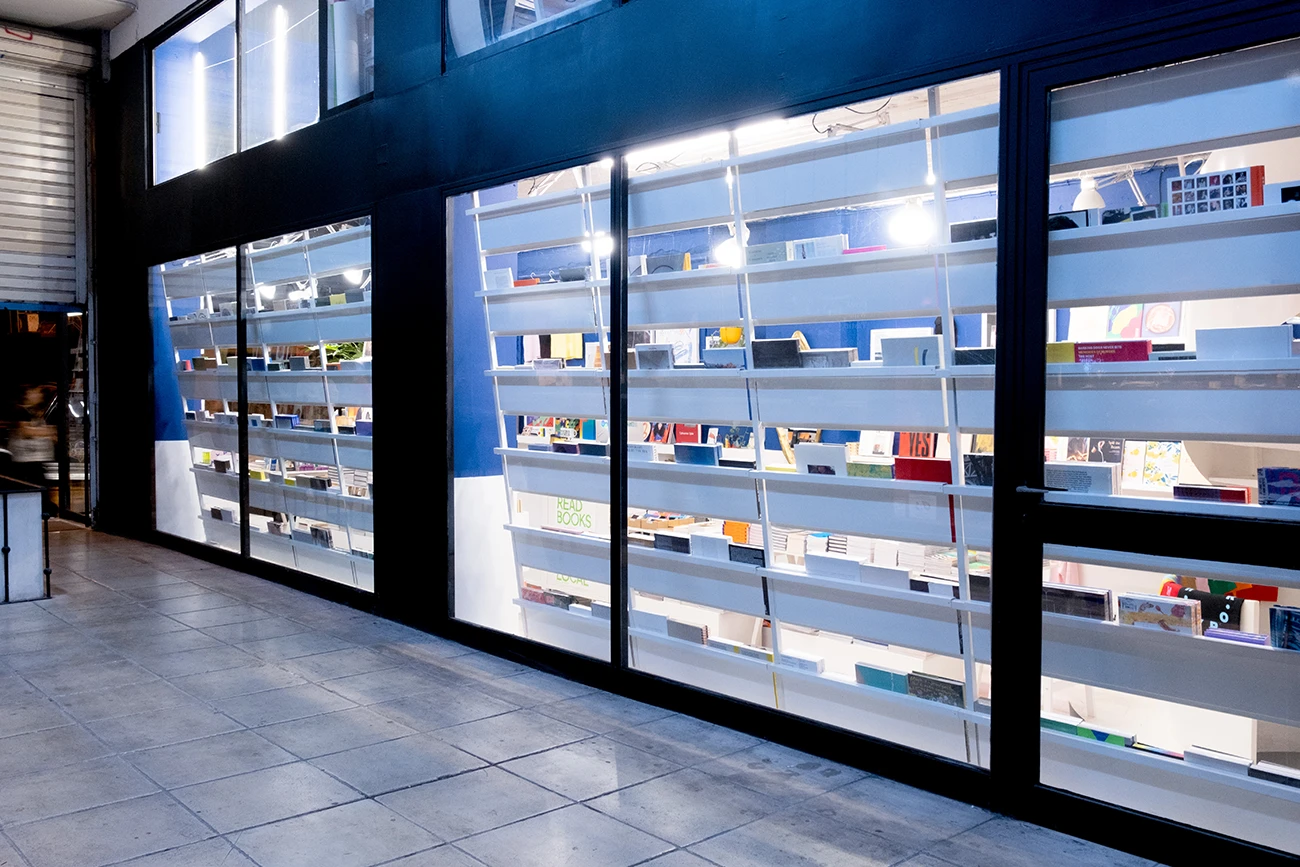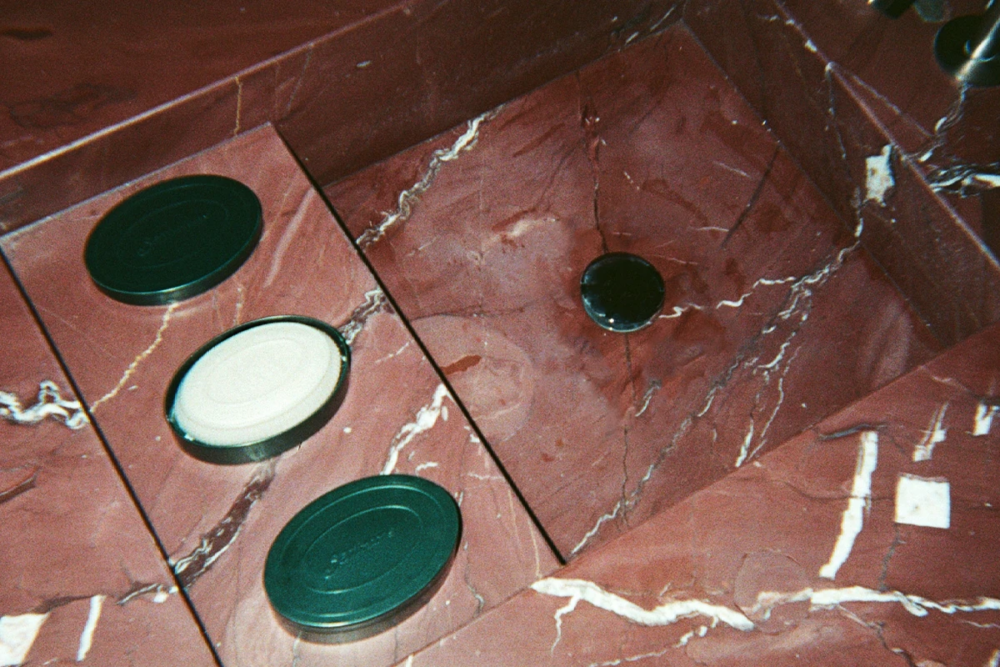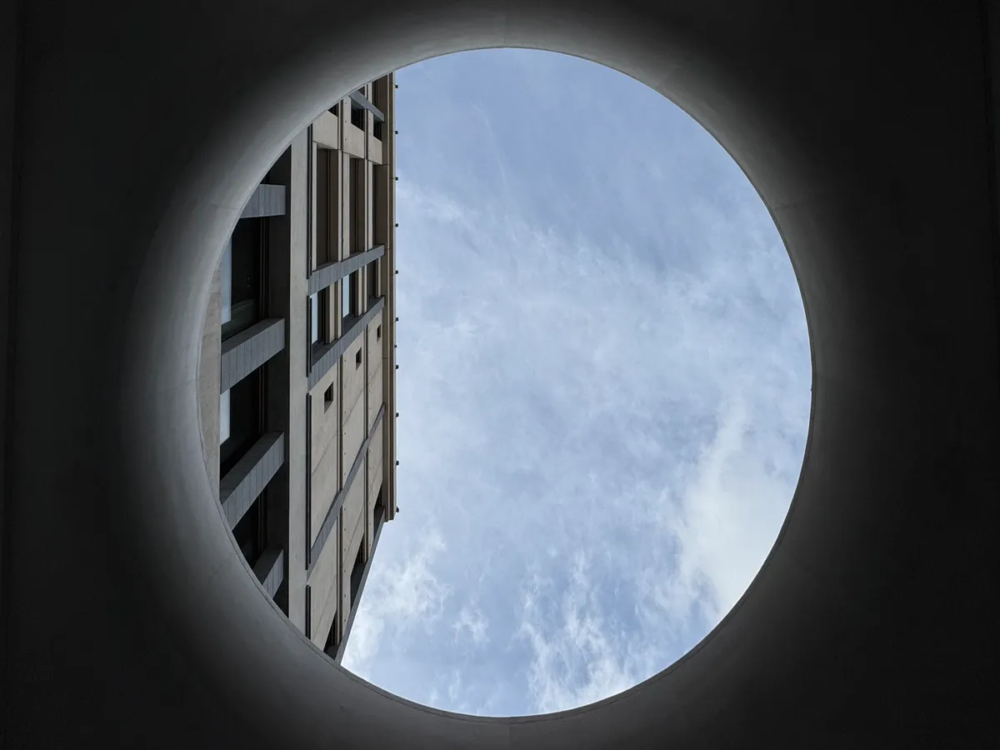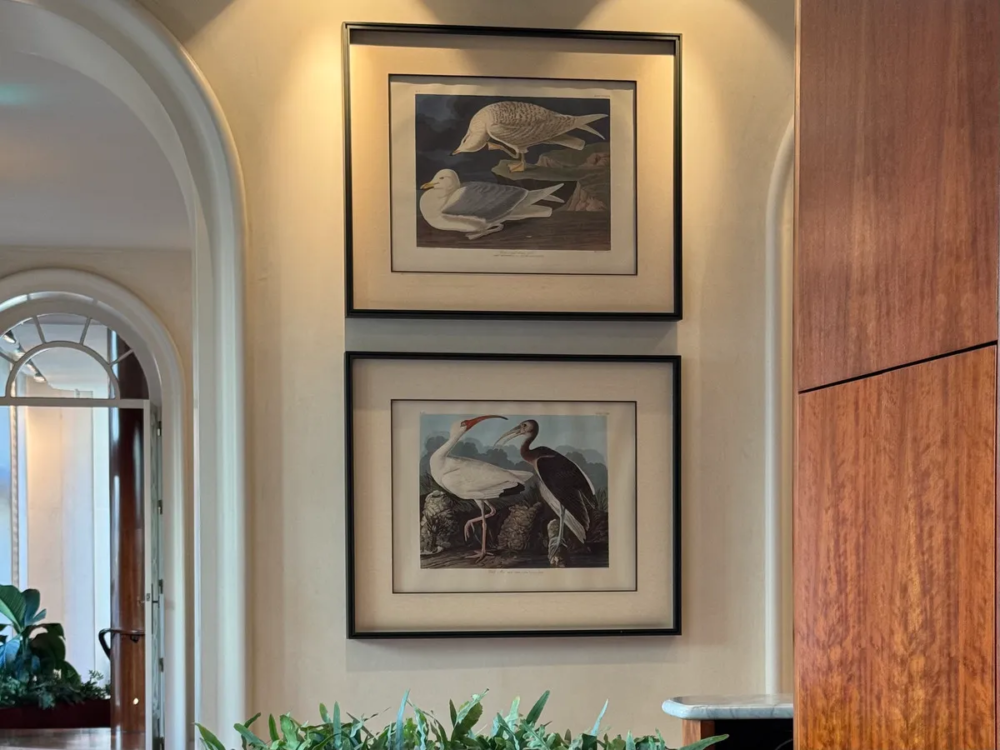
Athens’ Hyper Hypo and the unfinished business of independent publishing
In a city where economic crises have erased much of its printed culture, Hyper Hypo works without a business plan, without trend reports, and without the safety of predictable sales
In the backstreets of Monastiraki, Hyper Hypo is a bookstore refuses the safety of trends, betting on human instinct over algorithms
In contemporary Athens, a certain creative unrest has taken root. One that recalls downtown New York in the 1970s and ’80s, not merely for its aesthetic affinities, but for its defiant spirit. Both cities, in their respective eras, became stages for radical imagination: financially broken yet culturally uncontainable. Athens today is a place where artists and queers, anarchists and poets, squatters and dreamers, weave together a fragile but persistent counterculture.
As in New York’s East Village during the Reagan years, a shared sense of marginality becomes fertile ground for collaboration and protest. Athens, like that earlier New York, pulses with disobedience.
How Hyper Hypo in Monastiraki redefines what an art and design bookstore can be
Tucked into the narrow grid of Athens’ Monastiraki district, Hyper Hypo resists conventional bookstore narratives. It is neither solemn nor nostalgic. The shelves move across art, architecture, philosophy, and queer thought, arranged less like a catalogue and more like an open conversation. The store feels porous, absorbing what the city offers and returning it in altered form.
“We don’t follow trends, and we don’t chase algorithms,” say Stathis Mitropoulos and Andreas Kokkino. “We bring in books we believe in, and often we’re surprised by what people gravitate toward.” In a market dictated by data, this refusal of predictability in favor of serendipity reads as a quiet challenge. If Athens mirrors the energy of New York in its punk years, then Hyper Hypo feels like a downtown loft gallery crossed with a radical print workshop. Monastiraki, long marked by its disorderly mix of antique shops, graffiti-covered facades, and fluctuating tourist trade, now hums with a different friction.
From high culture to subculture: the dual vision of Hyper Hypo
Founded by Kokkino, a former fashion and design editor, and Mitropoulos, a graphic designer and photographer, Hyper Hypo – meaning above and below in Greek – reflects a duality they embrace: high culture and subculture, seriousness and playfulness. “We opened in December 2021, right before Christmas,” Kokkino recalls. “When we started thinking about opening a business, we didn’t have a formal plan or a clear idea of how it would work. We just wanted to create something that satisfied our own senses and taste. A space we felt was missing.”
What began as the idea of a quiet shop evolved quickly. “It became our little monster child,” he says.
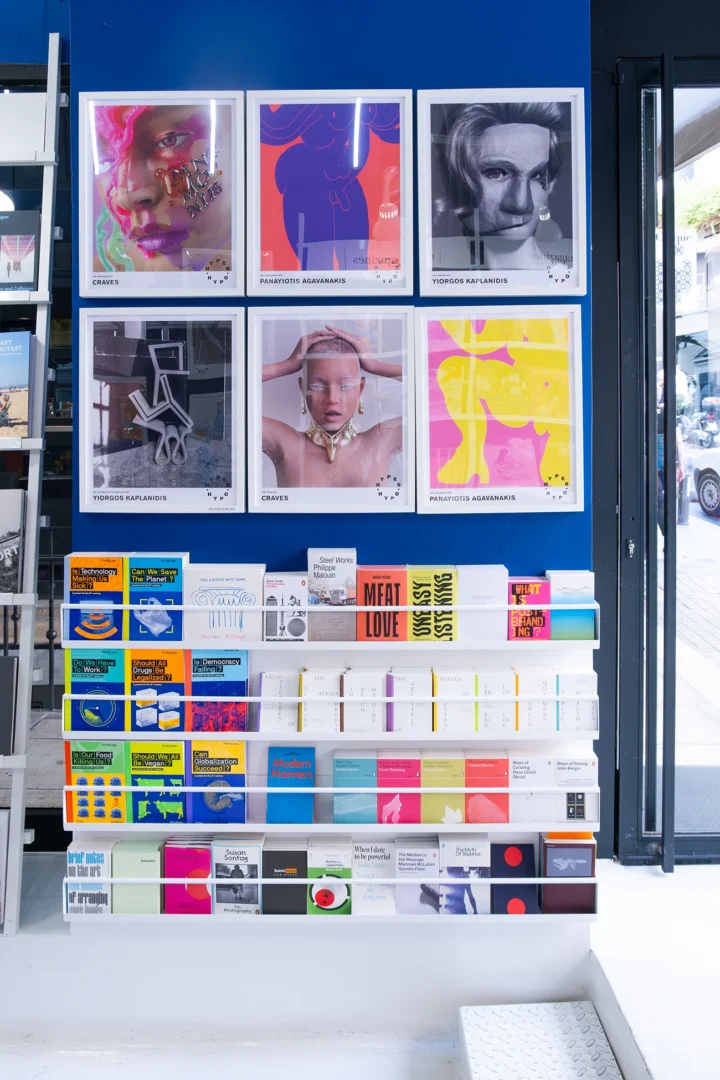
Print as resistance: why books and magazines matter in a digital age
Both founders have lived in New York and London, cities known for their independent bookshops and art scenes, but they insist Athens has its own pulse. “Some people even say Athens right now resembles New York in the ’80s,” they note, “with its artistic growth, underground energy, graffiti, nightlife, activism, and the ongoing fight for rights – it’s all here.” Greece, and Athens in particular, has a deep tradition of bookstores and publishing houses, partly due to the need to translate books into Greek. “There’s a real culture of small publishers and bookstores across the country. In our case, it’s a different kind of bookstore, one focused specifically on visual culture – architecture, design, art, photography, fashion, and related fields.”
For them, print is both resistance and invitation. “The beauty of magazines is that they speak about the now, but they also preserve it,” one of them says. “They’re like time capsules.” In a world dominated by fleeting digital images, books and magazines offer a tactile entry into an artist’s world. For many artists, publishing is part of their practice, making work accessible even to those who cannot afford an original piece of art. Kokkino remembers pulling out old issues of i-D from the 1990s and feeling instantly transported. “Buying a book today is like buying yourself time offline,” they add. How Hyper Hypo blends bookstore, publishing house, and cultural project space
While Hyper Hypo is a bookstore at its core, it has also become a publishing house and project space, hosting exhibitions, talks, and performances. Events like Queers Read Out Loud – an evening dedicated to queer discourse through readings, song, and poetry – transform the shop into a temporary archive of voices and community. Hosting Martin Parr for a signing and exhibition brought an unexpected international spotlight to the space. “We thought stuff like that only happened in museums, but there’s no place too small for something to matter,” they say.
One of their most unexpected successes was Travel On: Greek Everyday Solutions to Common Problems, created by three designers. It collects photos of improvised solutions Greeks devise for daily challenges, from a chair placed over a hole in the sidewalk to a grandmother’s DIY fix. “We feel very connected to the local art scene. Many of the people involved are our friends, collaborators, or colleagues. That connection is reflected in our publishing as well.” In two years, Hyper Hypo has published seven or eight books, most by artists and designers based in Greece, and their titles are sold internationally. Posters are also part of their output – a way to make art ownership more accessible.
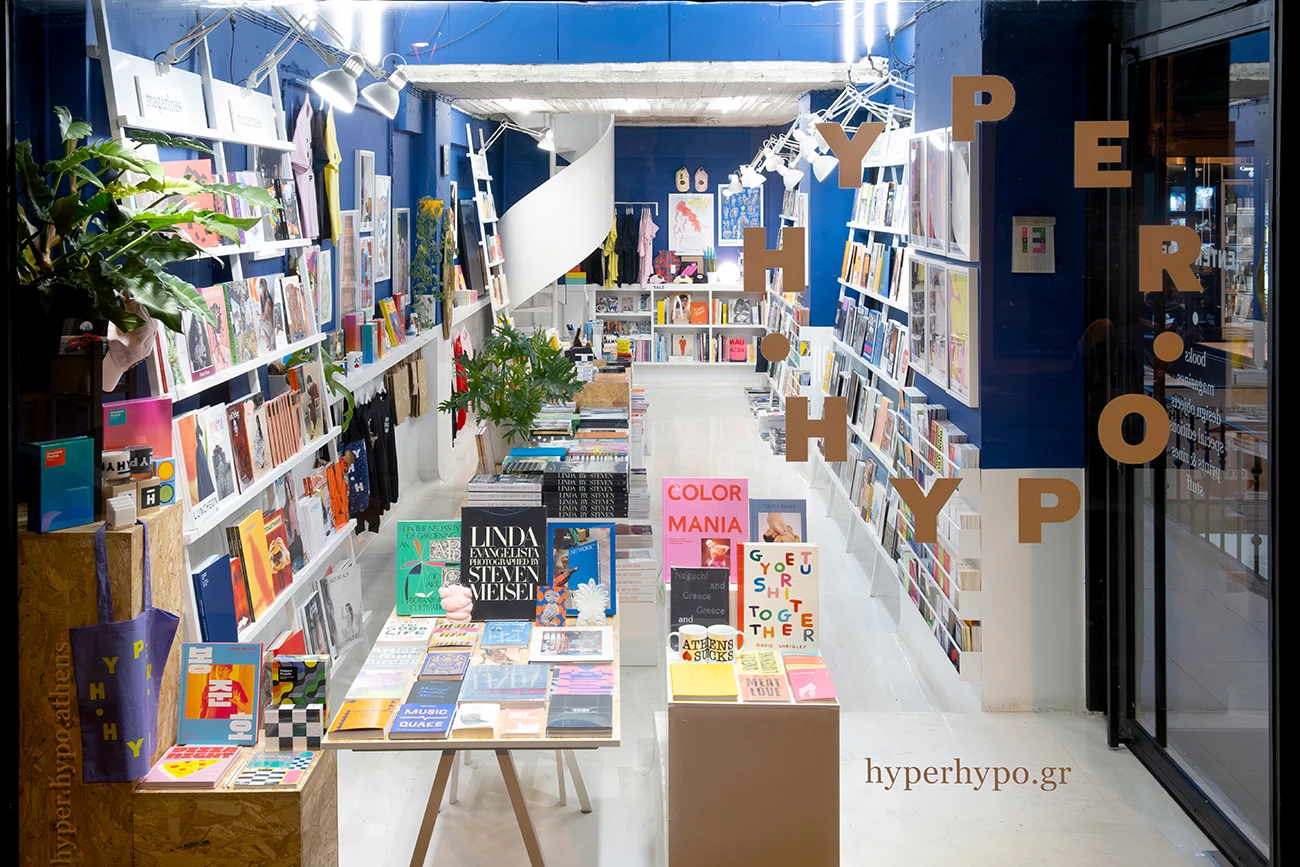
Curation as a personal act: choosing books with a critical and contemporary lens
Mitropoulos describes curation as a personal process: “We choose books we love, titles we want to hold ourselves.” They prioritize alternative perspectives that reframe even canonical works. “If it’s a book about Renaissance art, it has to present a contemporary or critical take. We’re not interested in just stocking a classic Michelangelo monograph, but rather something that reframes him in today’s context.”
Challenging digital censorship through physical space and visibility
Hyper Hypo’s mission extends beyond selling books, aiming to preserve intellectual complexity and artistic freedom in an algorithm-driven age. Mitropoulos and Kokkino say managing their social media presence often feels like navigating a puritanical system. “We post artistic photos, sometimes with nudity, but even when we’re careful, images get taken down or we get shadow-banned,” one recalls, mentioning a post of Ren Hang’s work that received no engagement until replaced with a book cover, which immediately attracted likes.
In their physical store, resistance is visible. “We have a street-facing window, so we use it to challenge norms. Boys kissing, nudes, provocative covers – we put them out there to show the tensions we embrace.”
Running a bookstore without algorithms: unpredictability and human choice
Watching what customers gravitate toward is, for them, an exercise in surrendering assumptions. “There are always patterns, but the real pattern is being surprised,” they say. “You think, ‘I love this book, people will love it too,’ and then nothing happens. Nobody picks it up. And then something else you were unsure about suddenly flies off the shelf.” It is a reminder that while bookstores are businesses, they are also spaces of risk, curiosity, and exchange. “Maybe that connects to what algorithms try to do, but we don’t have an algorithm here. We can’t predict what will resonate, and that’s what keeps it interesting.”
When asked what the bookstore would be if it were a book itself, they smile. “I think it would be a royal blue velvet hardcover. And it would have actual LED neon eyes on the cover, like lit up with a tiny battery,” Mitropoulos says. And the first sentence? “We are open.”
Hyper Hypo’s role in Athens’ independent publishing and cultural landscape
Hyper Hypo is an art and design bookshop located in Athens, focusing on contemporary visual culture. It carries a curated selection of internationally and locally published books and magazines on art, design, photography, architecture, fashion, graphic design, film, pop culture, and more. Throughout the year, it runs a schedule of publication-related talks, readings, performances, and exhibitions in its project space.
